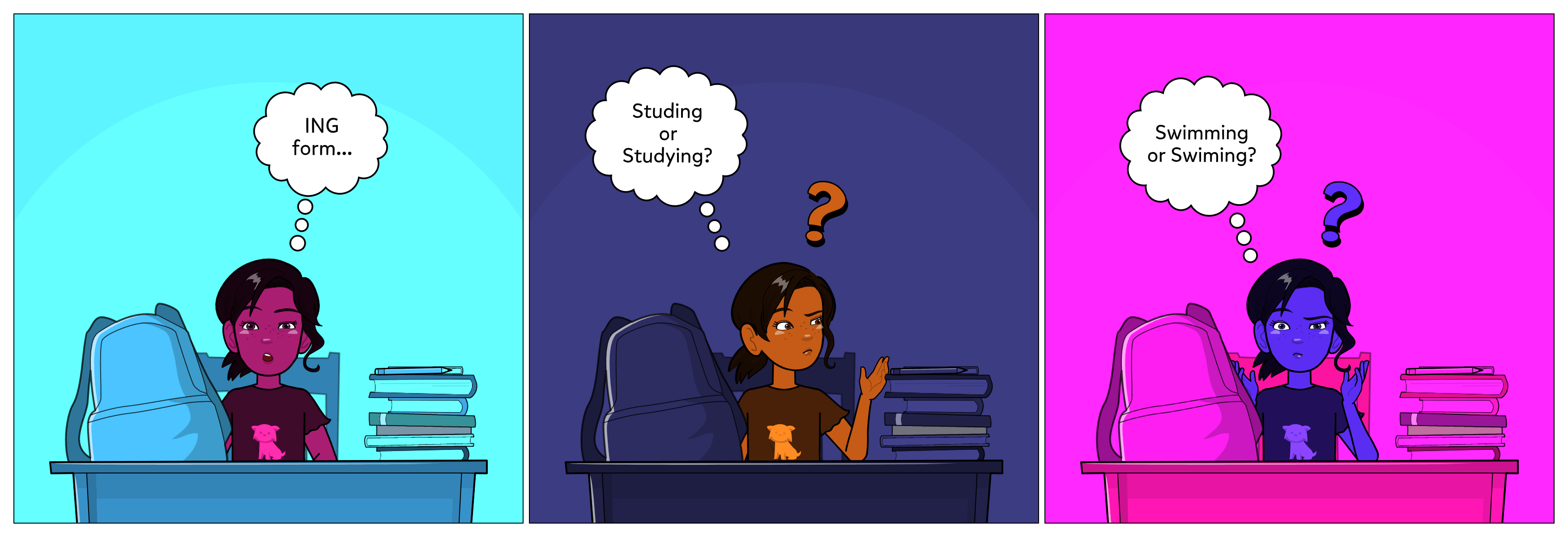
When we use the Present Continuous to express actions happening at the moment, we normally write the main verb adding “-ing”. Take a look at the following tips to write properly the “-ing” form.
For most verbs, we add -ING:
- ask ---- askING
- go ---- goING
For verbs ending with a consonant + -E, we leave out -E when we add -ING:
- hope --- hopING
- take ---- takING
We keep a double EE before -ING:
- see --- seeING
- agree ---- agreeING
When a verb ends in -IE, it changes to -Y when we add -ING:
- die ---- dYING
- lie ---- lYING
If a verb ends with -Y, it does not change:
- hurry ---- hurryING
- study ---- studyING
When a one syllable verb follows the pattern consonant-vowel-consonant, we double the final consonant:
- get ---- getTING
- run ---- runNING
But when it finishes in -Y, -W or -X, it doesn’t change:
- buy ---- buyING
- sew ---- sewING
- box ---- boxING
When the verb has two syllables and the final one is stressed, we double the last consonant:
- begin ---- beginNING
- prefer ---- preferRING
Write the correct -ing form for the following verbs. Place them in the right box.
| wave | put | begin | play | write | see | sew | run |
| watch | flee | admit | listen | tie | die | fly | lay |


